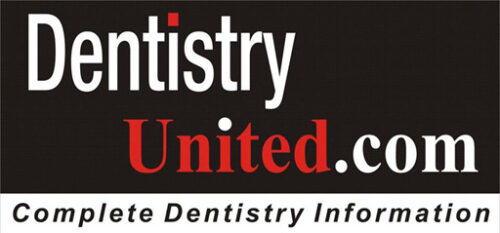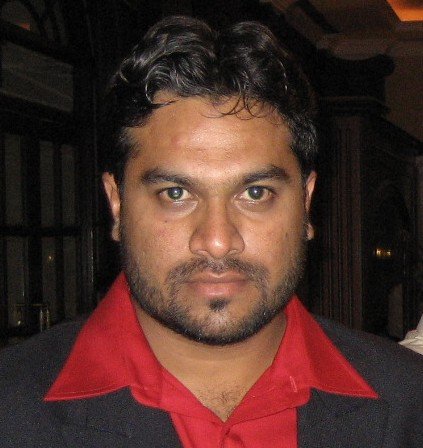Introduction to Bioprinting
Imagine a future where we could bioprint a new periodontal ligament, gingival tissue, or even alveolar bone right in the operatory. That’s the promise of bioprinting, a revolutionary fusion of 3D printing and biology that’s shifting restorative dentistry from science fiction to clinical reality. As a dentist, I’ve seen how this technology could transform everything from repairing a carious lesion to regenerating periodontal structures. Bioprinting isn’t just for engineers; it’s poised to redefine dental practice, and I’m here to explain it simply yet with the depth you’d expect from a dental professional.
The Basics:
How Does Bioprinting Work?
Think of bioprinting as crafting a dental restoration, but instead of composite resin or zirconia, we’re working with living cells. It’s 3D printing with a biological twist, using bio-ink made of cells and biocompatible materials instead of inert substances.
Planning the Blueprint:
We start with a digital model, like a CBCT scan or intraoral scan of your dentition, mapping out the target, say, a segment of mandibular bone or a gingival graft.
Mixing the Bio-ink:
This is where it gets exciting. We harvest cells, maybe your own mesenchymal stem cells from dental pulp, and blend them with a gel-like scaffold material, creating a bio-ink that’s ready to support cellular vitality.
Printing It Out:
A bioprinter deposits this bio-ink layer by layer, fabricating something like a periodontal scaffold or dentin matrix. It’s as precise as placing a matrix band, but alive and dynamic.
Maturing the Tissue:
Post-printing, we incubate the structure, like curing a provisional, in a bioreactor to promote cellular proliferation and differentiation into functional tissue, ready for implantation.
Different Ways to Bioprint
Bioprinting offers multiple techniques, each with its own edge in dental applications.
Inkjet Bioprinting: Like jetting anesthetic from a syringe, this method spits out droplets of bio-ink. It’s cost-effective for small gingival patches, though cell vitality can take a hit, similar to over-prepping enamel.
Extrusion Bioprinting: Think of expressing flowable composite through a tip. This squeezes out thicker bio-inks, ideal for dense structures like alveolar bone scaffolds, and it’s a workhorse in dental research.
Laser Bioprinting: Precision akin to a diode laser, this uses light to place cells exactly where needed, perfect for delicate pulp tissue or periodontal ligament regeneration with minimal trauma.
Stereolithography: Like photopolymerizing a sealant, this hardens bio-ink with light, layer by layer. It’s high-resolution, great for intricate dentin tubules or cemento-enamel junction replicas.
Bio-inks: The Restorative Materials of Tomorrow
Bio-inks are the core of bioprinting, much like amalgam or resin in traditional dentistry. They must support cells like a well-fitted crown supports occlusion.
Hydrogels: Soft, hydrated gels from collagen or alginate, mimicking the extracellular matrix, perfect for periodontal soft tissue regeneration.
Decellularized Matrix: Derived from donor tissue, stripped of cells, this is like a biologic scaffold for gingiva or periosteum, replicating nature’s architecture.
Synthetic Bio-inks: Materials like PEG act as the dental dam of bio-inks, strong and stable, ideal for supporting a printed crown base or bone graft.
Cell-laden Bio-inks: Preloaded with viable cells, these are ready to grow into pulp tissue or cementum, like pre-mixed biologic restoratives.
Stem Cell Bio-inks: Using dental pulp stem cells, these can differentiate into odontoblasts or osteoblasts, key for dentin or bone regeneration.
Hydroxyapatite Bio-inks: Mimicking enamel and bone mineral, these are the go-to for printing osseous structures like alveolar ridge augmentations.
The Machines: Bioprinters
Bioprinters are our new dental handpieces, specialized for biologic materials.
CELLINK BIO X: A versatile unit for printing periodontal scaffolds or pulp constructs, easy enough for any dental lab.
Organovo NovoGen MMX: Originally for drug testing tissues, it could fabricate gingival grafts or dentin layers with practice-ready precision.
Allevi Bioprinters: User-friendly, like a digital scanner, and adaptable for testing hydroxyapatite bone grafts.
RegenHu 3DDiscovery: High-end, like a CEREC machine, for intricate tasks like vascularizing periodontal tissue.
How It All Started and Where It’s Going
Bioprinting began in the early 2000s with basic cartilage, think TMJ disc material. By 2013, Organovo printed functional liver tissue, proving its potential. In dentistry, we’ve progressed to bioprinting dentin scaffolds, osseous grafts, and vascularized gingiva. It’s no longer just a flat veneer; it’s evolving into complex, vital structures for the oral cavity.
Why Dentistry Loves Bioprinting
As a dentist, bioprinting is like having an unlimited supply of autogenous grafts.
Restoring Teeth and Periodontium:
Print gingival tissue for recession defects or bone for implant sites, no more harvesting palatal grafts.
Testing Dental Materials:
Bioprinted pulp or gingiva to trial new desensitizing agents or antimicrobials, skipping animal models.
Custom Prosthetics:
Tailored implants or tissue scaffolds from your own scans, precision beyond CAD/CAM crowns.
Studying Oral Pathology:
Print caries models or squamous cell carcinoma replicas to refine treatments like fluoride therapies or chemo regimens.
Whole Teeth:
Printing enamel, dentin, and pulp in one go is the endgame, potentially phasing out bridges and implants.
The Tough Stuff: Challenges Ahead
Bioprinting’s not caries-free yet; here are the hurdles.
Cell Viability: Cells can apoptose during printing, like enamel under occlusal trauma, we need them thriving for success.
Vascularization: Larger grafts, like a maxillary sinus lift, need blood supply. Printing capillaries is like threading floss under a tight contact.
Regulatory Hurdles: FDA approval is slower than curing a bulk-fill composite; safety is paramount before chairside use.
Cost: Bioprinters and bio-inks are pricier than a top-tier ultrasonic scaler; scalability is the key.
The Future: A Dentist’s Vision
Imagine a patient with a fractured incisor, and I bioprint a dentin layer in-office, no drill, just regeneration. Or growing a tooth from your own stem cells, replacing titanium implants. With advanced bio-inks, AI-driven occlusal modeling, and stem cell integration, we could regenerate entire periodontal complexes. One day, bioprinting might solve the donor shortage, starting with teeth and scaling to organs.
Wrapping It Up
Bioprinting bridges my explorer and your oral biology, pushing dentistry into uncharted territory. From gingival grafts to pulp regeneration to dreaming of bioengineered dentition, it’s making practice more precise and patient-centric. As a trained dentist, I’m thrilled to see it unfold. For now, it’s a beginner’s vision with limitless potential. Your next prophylaxis might just include a bioprinted twist.
Dr. Syed Nabeel, BDS, D.Orth, MFD RCS (Ireland), MFDS RCPS (Glasgow)
Dr. Syed Nabeel is a dedicated dental professional with a passion for advancing education, patient care, and innovation in dentistry. As the Founder and CEO of DentistryUnited.com, a platform established in 2004, he has worked tirelessly to create a global space for knowledge-sharing among dental professionals. His commitment to academic excellence led to the launch of Dental Follicle – The E-Journal of Dentistry (ISSN 2230-9489) in 2006, providing a platform for scholarly exchange and contemporary discussions in the field.
As the Managing Director of Smile Maker Clinics Pvt Ltd, Dr. Nabeel leads a growing network of clinics in South India, where patient-centered care meets innovation. His clinical expertise focuses on Neuromuscular Dentistry, Full-Mouth Rehabilitation, and Smile Makeovers, helping patients regain function and confidence through personalized treatment approaches. He is also a firm believer in evidence-based dentistry, with his in-house research team actively contributing to dental literature—an uncommon yet vital initiative in private practice.
With over two decades of experience, Dr. Nabeel has developed a keen interest in occlusal dynamics and temporomandibular joint (TMJ) disorders, ensuring that his treatments prioritize long-term comfort and stability. His curiosity and openness to emerging technologies have led him to explore digital dentistry and artificial intelligence (AI), continually seeking ways to enhance diagnostics, treatment planning, and patient experience.
Beyond clinical practice, Dr. Nabeel enjoys teaching and mentoring fellow professionals, particularly in neuromuscular dentistry and practice management. His lectures focus on workflow optimization, patient engagement strategies, and integrating modern technology into dental practices, offering practical insights that empower others to refine their approach to patient care.
Outside of dentistry, he finds joy in wildlife photography, travel, gardening, and creative thinking—interests that reflect his deep appreciation for learning and the world around him. While his journey has been shaped by dedication and perseverance, he remains grateful for the mentors, colleagues, and patients who continue to inspire him.
For professional inquiries, Dr. Nabeel can be reached at dentistryunited@gmail.com

